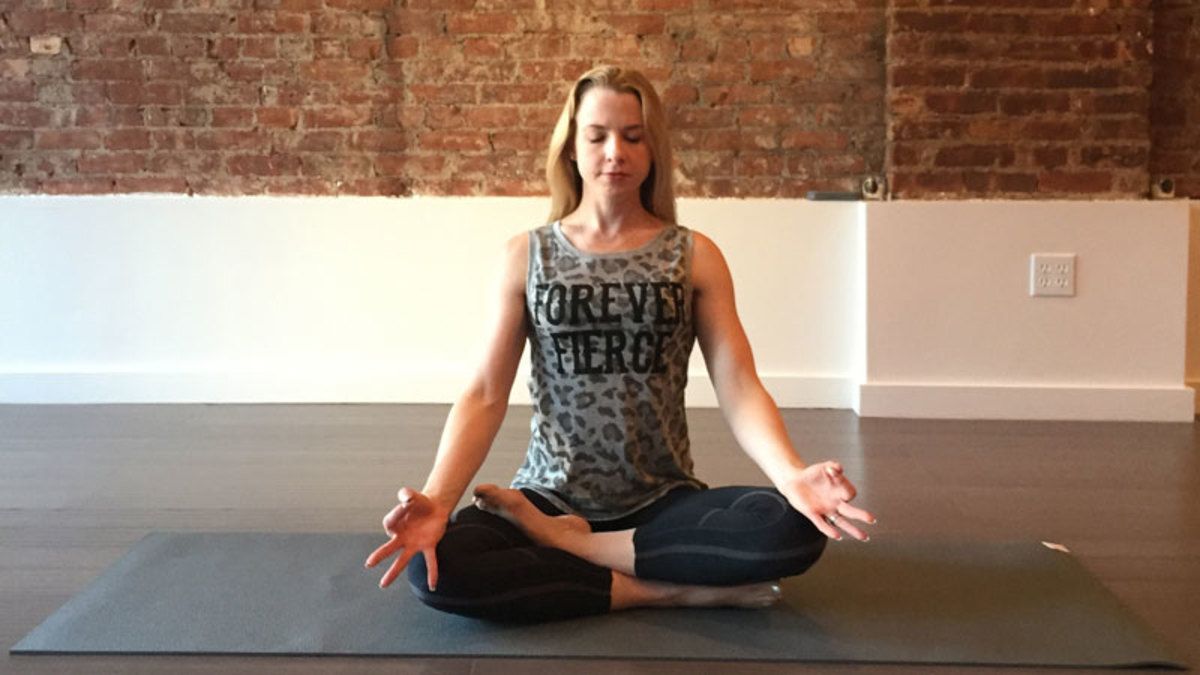
Alternate nostril breathing: Ujjayi breathing that wins the mind
Have you ever found yourself in a yoga class near someone who breathes noisily? Have you ever wondered why you breathe like that? It has happened to me many times. Intrigued by what they were doing these practitioners. I went to do some research and I understood that they were using an alternate nostril breathing technique called Ujjayi breathing, also known as ” breath victorious.”
With a little ‘practice I learned this technique and, to be honest, I have not stopped using it. Over time it has become one of the most important aspects of my practice. It is fantastic to increase concentration, to calm the mind and to control the breath.
In some styles, such as Ashtanga and Vinyasa yoga, the Ujjayi breath is maintained even for the duration of the practice. Let the breath be the soundtrack of the practice.
Why is Alternate nostril breathing called Ujjayi breathing?
In yoga, all breathing exercises are called ” Pranayama ” and are a very important aspect of the practice.
According to the Yoga Sutras, one of the classical texts of yoga written by Patanjali, breathing techniques are one of the branches that make up the tree of yoga. These breathing control techniques are used to calm the mind, improve breathing and strengthen the body.
The second word we find in the name of this technique is ” Ujjayi.” In Sanskrit, this term means victory and is usually translated with the victorious breath, because when one practices the lungs, they expand in all directions, and the chest expands just like that of a winning warrior.
Another reason why it is called victorious breath is, when practiced correctly, it allows to overcome the mind, which is calm and allows one to be in the here and now.
According to a different interpretation instead, the term is composed of ” Ud,” which means to raise, and from ” Jaya,” which instead refers to an Indian greeting. The union of these two terms means ” what is expressed aloud ” and refers to the loud enough sound that one hears when someone practices this type of breathing.
The benefits of this Alternate nostril breathing technique
Ujjayi breathing is used a lot by practitioners all over the world because of its innumerable benefits. Let’s see them one by one.
- First of all, as explained in detail in this article, maintaining a deep, long and calm breath is one of the most important things in yoga and breathing Ujjayi allows you to do it.
- It produces a heating effect that increases body temperature.
- It slows the heartbeat, and the circulatory system improves.
- By controlling the breath, the mind becomes calm and becomes more aware of what happens inside.
- Unlike other forms of Pranayama, which should be practiced with the body stationary in a meditative position, this breathing technique can also be practiced during the execution of the asanas.
- Particularly deep breathing increases the elasticity of the lungs and thus the whole respiratory system benefits.
- Thanks to the concentration on the sound of the breath, one can connect the mind with the body and the spirit.
- The deepening of breathing greatly improves physical practice.
- It is particularly beneficial for calming the mind, relieving stress and reducing any form of nervous tension.
- Gaseous exchanges that occur at the level of the lungs are more efficient.
- It has a deep relaxation effect it is great for fighting insomnia.
- Stimulates Visuddha chakra.
You did not expect a simple way of breathing to have so many benefits, did you? To find out all the benefits of yoga, read this article too. Let’s go now to see what you should be careful about.
Precautions
Although it’s good for all these reasons you’ve just seen, there are also some precautions to keep in mind when practicing, especially if you’ve been doing yoga for a short time.
Especially the first time you practice, you tend to slightly narrow the glottis too much. The breath should be smooth all the time. If it is forced instead, it means that you are doing it badly and that you are probably closing the passage of air in your throat too much. The first time you practice this, or any other form of pranayama, should be done under the eyes of an experienced instructor.
If you feel dizzy or dizzy, end the exercise and relax in Balasana or Savasana. Avoid practicing this or any other breathing technique yourself if you have respiratory problems, such as asthma.
Always try to perform any yoga exercise respecting your limits and, for any health problem, talk to a doctor or your teacher who will surely be able to advise you what to do.
If you have not been practicing for a long time and are looking for more information on how to practice yoga safely, you can also take a look at easy yoga, the guide to start yoga and effectively.
How to breath Ujjayi
Before going to see a very simple exercise to learn this breathing technique, it is important to know the path that makes the air every time we breathe in.
We do this by imagining that we slow down the breathing process as if I pressed the button to send everything in slow motion.
Each time you inhale the air passes into the sinuses, crosses the pharynx, passes the glottis and finally, after the larynx and the trachea gets into the lungs.
You must know that the air, when it comes into contact with the lungs, cannot be cold otherwise the internal organs could be damaged and because in this way the gaseous exchanges happen too slowly.
Therefore, to avoid all this, the inner cell walls of the pharynx and nasal sinuses are covered by a mucous membrane rich in blood that serves to heat the air that passes through it. Once heated, it crosses the glottis, a muscular opening that regulates the flow of air in the lower respiratory tract.
Normally the glottis is unconsciously controlled, but with the Ujjayi breathing, we can voluntarily control it. Thanks to this breathing technique, the glottis opening can be consciously restricted, so that the air stays longer in the pharynx and nasal cavities.
This action causes the air to stop longer in contact with the mucosa and is therefore heated beyond normal. Furthermore, the airflow can also be controlled voluntarily.
Not bad this discovery of the ancient yogis, right?
Now that you understand the theory, it’s time to move on to practice.
Are you ready?
Here’s what you need to do:
- Sit down on the mat in Sukhasana, inSukhasana easy position half lotus, in full lotus, in Vajrasana or any position that allows you to keep your back straight and be comfortable.
- Begin to inhale using your mouth.
- Always breathe by keeping your mouth open trying to make that typical whispering sound (or what you do when you have to clean your glasses).
- In the next inhalation, start with an open mouth. When you are halfway down, quickly close your mouth and try to continue inhaling with your nose. Now you should be able to breathe with the nose by doing the same sound you did previously when the mouth was open.
- In the next exhalation, always begins with an open mouth. As before, when you’re halfway down, you close your mouth quickly and try to continue breathing with your nose, always making the same sound.
- Now you can continue to breathe only with the nose. But try always to make the same sound you did when your mouth was open.
- Now you can surely feel how the air passes through the throat and makes that typical sound you had heard in the classroom. There are also those who say that it is very similar to the sound of the sea.
If you have just started doing yoga, I suggest you take a look at this guide where you will find all the indications to practice correctly and effectively.
Advice to improve the practice
The first few times you will practice this technique might seem slightly tiring, and it will be like you lacked the air. This most likely happens because you close the glottis too much and block the flow of air. The closure should be light and should not block the air that passes through it.
Remember that the breath should be slow, long, deep and regular. If it is not, focus on breathing and make sure it is. I know that initially breathing in this way is quite strange, but continues to practice constantly and in a short time, the breath Ujjayi will come almost naturally.
You may also like 12 Interesting Ways to Relax








